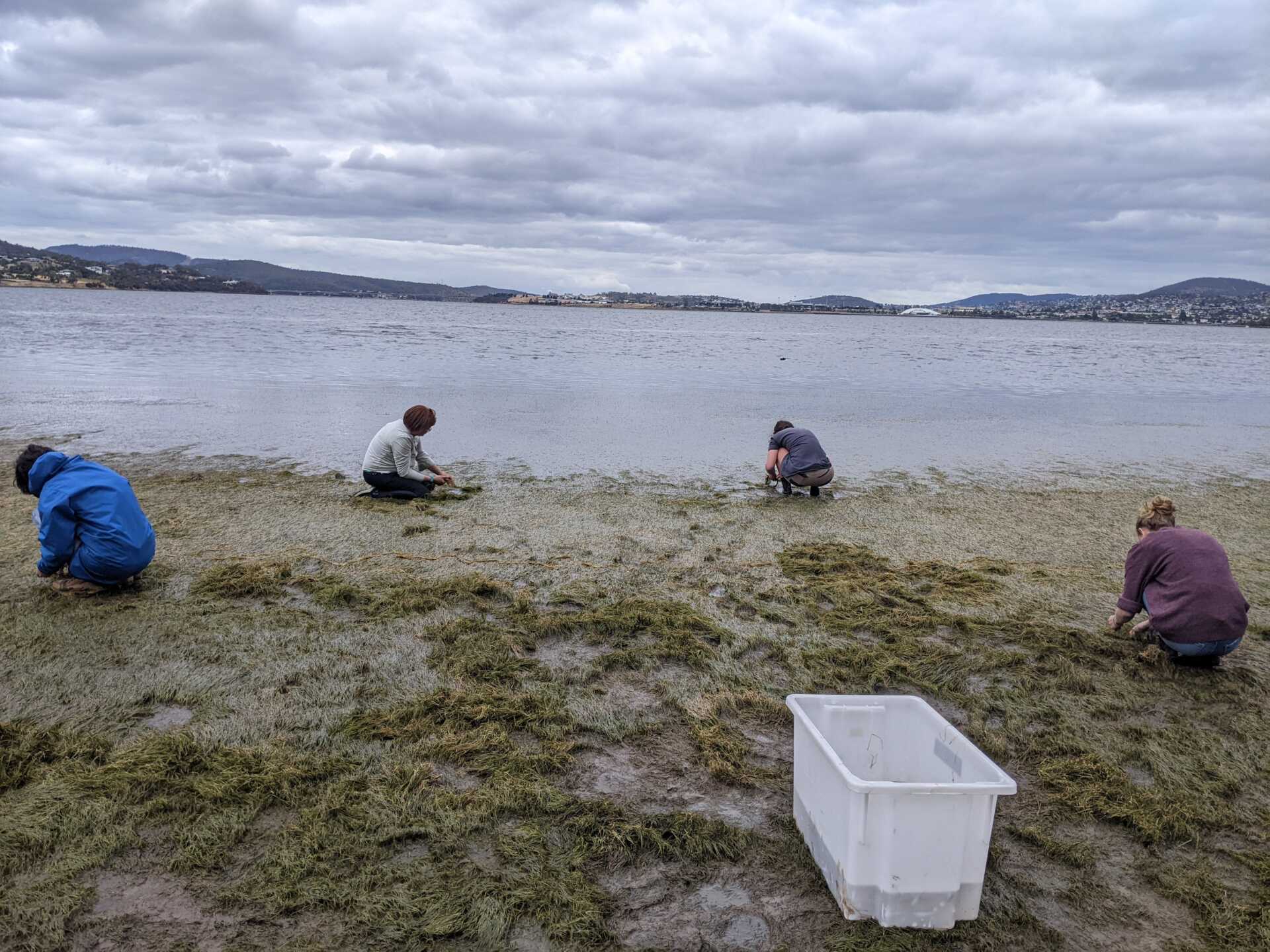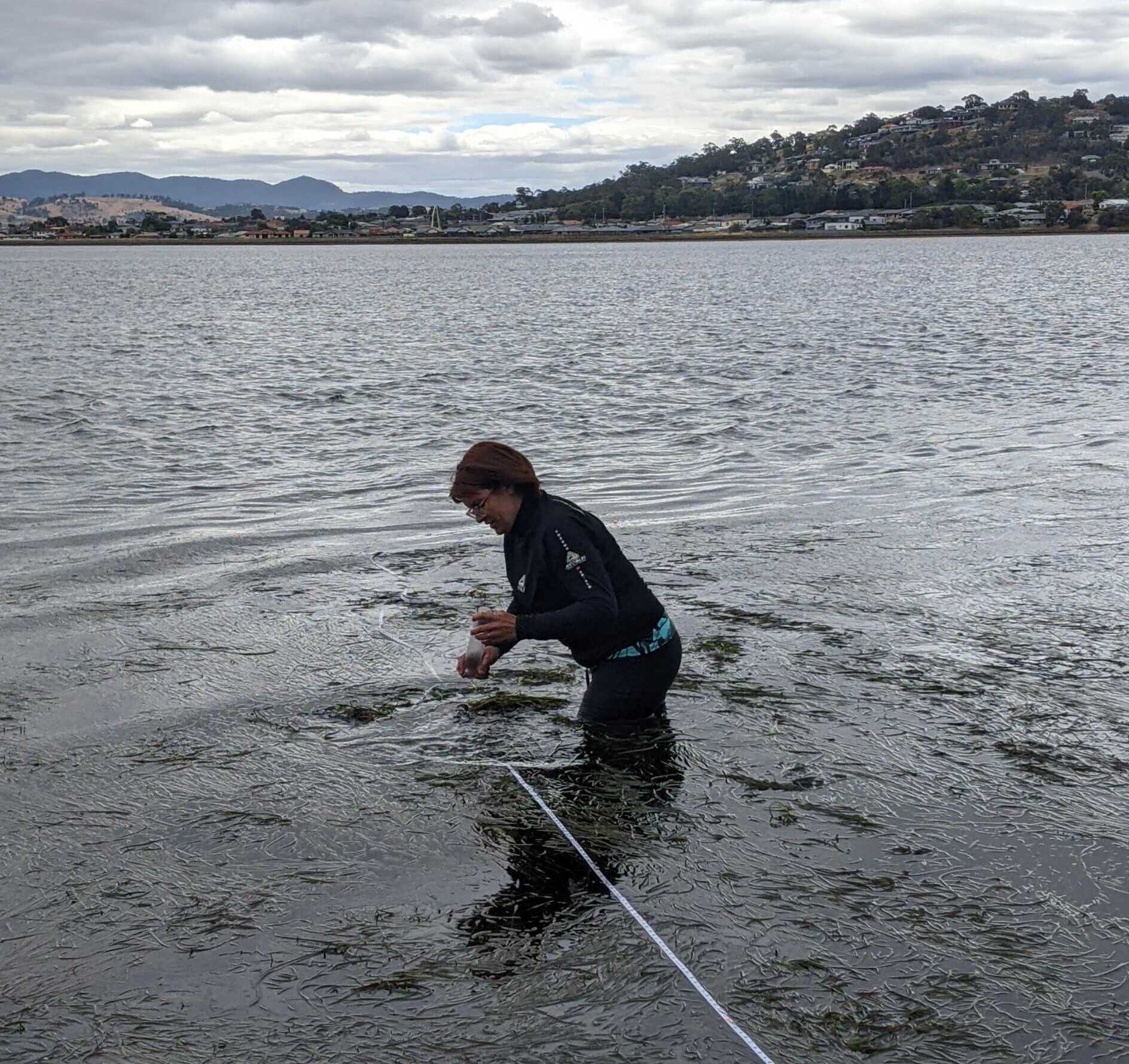A first for seagrass in Tasmania

Tassie’s first seagrass restoration trial is well underway! Researchers from the Institute For Marine and Antarctic Studies (IMAS), Kelsie Fractal and Beth Strain, have trialled four different restoration methods at four sites in the Derwent Estuary and Ralphs Bay.
Where do the seeds come from?
Volunteers were shown how to identify and harvest flowering shoots on Zostera seagrass which contain seeds. A few thousand seeds were collected on the volunteer seed collection day. These seeds were then taken to holding tanks at IMAS and processed by staff.
Restoration day activities
Volunteers assisted in a restoration day where they were told about and shown each of the methods being trialled and were given an opportunity to be involved in each of the methods. They collected and planted plugs, made and planted sprig bundles, trialled the direct injection seeding, and helped prepare and install a number of small hessian bags.
The restoration methods
Plugs: a PVC pipe is used to collect seagrass with shoots and sediment attached from healthy seagrass meadows. They are then transplanted into recipient sites.
Sprigs: Seagrass from the edge of a healthy meadow is dug up either by hand or using a rake so that shoots, rhizomes (underground stem) and roots are kept intact. Sprigs are transplanted into sections of the seafloor.
Direct Injection Seeding (DIS): A slurry of local sediment and seeds are mixed and inserted into a calking gun. The gun is modified so that seeds and sediment are dispersed at a predetermined depth and rate of seeds per injection.
Seed Bags: Small hessian bags are filled with local sediments and a predetermined number of seeds. The bags are stitched closed, and a rope is used to attach the bags together, which is pegged to the seafloor to keep them in place.
What’s next?
The next step is to monitor our restoration efforts to find out which methods worked best. We hope this will allow us to do larger-scale seagrass restoration in Tasmania in the future!


